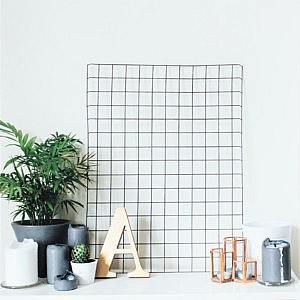A day in the life of a professional organiser: Anita Fortes
Have you ever wondered what it's really like to be a professional organiser? In this post, Anita Fortes of A Neater Life takes us behind the scenes of her business and guides us through a typical day in her life as a professional organiser.Anita's day
One of the things I love about running my own business is choosing my working hours. That said, I'm an early riser, usually up before 6 a.m., when my Labrador Retriever takes me for a walk on Overstrand beach. After showering and breakfast, it's time to deal with admin tasks. After moving to a new house last year, I've progressed from using the kitchen table to an office on the first floor. I check emails and add a little more to a feature on organising which I'm writing for a local magazine. Then I prepare for my in-person work with my client, Eva*. I look through the notes from my last visit, make lunch for later and pack up a few resources. I see my job as supporting people to make a change in their lives. It just happens to be focused on belongings and clutter. Living in rural Norfolk invariably means a long drive, but it's a good opportunity to think about how I will support my client. When I arrive, I unpack storage boxes, stationery and a labelling machine and, after a quick cuppa, we get started. Eva is a young woman with a busy family life and a demanding job. She's accomplished, intelligent, and hoards paperwork'¦lots of it. Documents, magazines, newspapers and notebooks are in piles everywhere. The sheer volume had become overwhelming, so she asked for help. We've been working together regularly for several months and she's made amazing progress. Our agreed aim is to reduce the paperwork sufficiently to create a contained filing system of documents, stored in one place. To make progress with this, it's important to work to a structure.
I help her to prioritise and organise her thinking by sorting documents into categories. To encourage decluttering I offer new perspectives: Is it essential to keep that? How will keeping it benefit you? I check that she is not becoming too absorbed reading each document. This keeps the momentum going and makes the best use of the time we have.
I'm aware of Eva's rising anxiety levels, so we take regular short breaks to diffuse. If it becomes tricky, I mention her 'clutter free' ambition - she would love to set up a business consultancy. I'll definitely help her to achieve this.
Five hours of decluttering is enough because it's quite intense. We finish the session with a cup of tea, highlight our achievements and chat about the aims for next time. I give her a small task to focus on until then, for example, clearing her desk daily.
Eva is a young woman with a busy family life and a demanding job. She's accomplished, intelligent, and hoards paperwork'¦lots of it. Documents, magazines, newspapers and notebooks are in piles everywhere. The sheer volume had become overwhelming, so she asked for help. We've been working together regularly for several months and she's made amazing progress. Our agreed aim is to reduce the paperwork sufficiently to create a contained filing system of documents, stored in one place. To make progress with this, it's important to work to a structure.
I help her to prioritise and organise her thinking by sorting documents into categories. To encourage decluttering I offer new perspectives: Is it essential to keep that? How will keeping it benefit you? I check that she is not becoming too absorbed reading each document. This keeps the momentum going and makes the best use of the time we have.
I'm aware of Eva's rising anxiety levels, so we take regular short breaks to diffuse. If it becomes tricky, I mention her 'clutter free' ambition - she would love to set up a business consultancy. I'll definitely help her to achieve this.
Five hours of decluttering is enough because it's quite intense. We finish the session with a cup of tea, highlight our achievements and chat about the aims for next time. I give her a small task to focus on until then, for example, clearing her desk daily.
 On the drive home, I call in to see a new client. She wants to declutter and reorganise rooms to create a spare bedroom. She tells me that she is taking medication for depression. We arrange a session for the following week.
Once home I feed and walk the dog. Later, I check emails and catch up with invoicing. If I can cope with the frustration, I might do some social media marketing.
Or I might just enjoy a large glass of wine.
* Names have been changed to protect clients' confidentiality. All APDO-registered organisers adhere to the APDO Code of Ethics.
On the drive home, I call in to see a new client. She wants to declutter and reorganise rooms to create a spare bedroom. She tells me that she is taking medication for depression. We arrange a session for the following week.
Once home I feed and walk the dog. Later, I check emails and catch up with invoicing. If I can cope with the frustration, I might do some social media marketing.
Or I might just enjoy a large glass of wine.
* Names have been changed to protect clients' confidentiality. All APDO-registered organisers adhere to the APDO Code of Ethics.
If Anita's post has inspired you to start your own professional organising business, APDO offers regular training and support for organisers. Visit the training page to find out more!
